Cell Biology (copy)
1/54
Earn XP
Name | Mastery | Learn | Test | Matching | Spaced |
|---|
No study sessions yet.
55 Terms
Cell theory
A scientific explanation of what cells are and the relationship between cells and living things.
What does the Cell Theory state?
I. All living things are made up of one or more cells II. Cells are the smallest living unit in all organisms III. All cells come from other pre-existing cells (through whatever means)
Unicellular
Something that is made up of one cell, a single-celled organism. Has one cell. Example: Amobea
Multicellular
Something that is made up of more than one cell, consists of many cells. Has multiple cells. Example: Humans
What do prokaryotes and eukaryotes have in common
Genetic material (DNA), cytoplasm, ribosomes, cell plasma membrane
What are prokaryotes?
Bacteria and Archaea
What are eukaryotes?
Animals, plants, fungi, protists
What defines prokaryotes?
No nucleus (pro rhymes with no) and no membrane-bound organelles (e.g. no mitochondria or Golgi apparatus),
What defines eukaryotes?
They do have nucleus (eu rhymes with do) and membrane-bound organelles (such as mitochondria and Golgi apparatus),
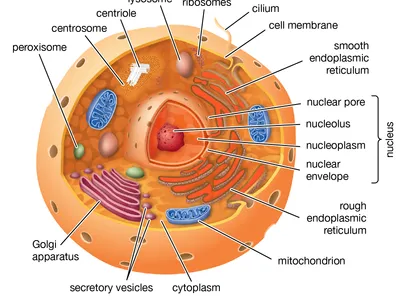
Cell membrane
Also called plasma membrane, it's a thin, flexible barrier around the cell that regulates which substances enters and exits. It's selectively permeable, meaning it selects what goes in and out. This keeps homeostasis in the cell (keeps it stable). Found in both prokaryotes and eukaryotes.
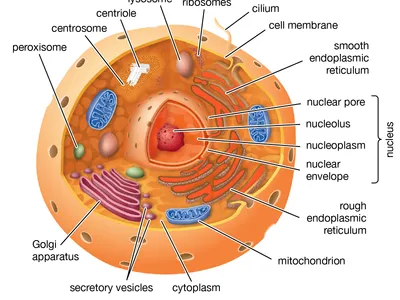
Cytoplasm
A jellylike substance inside the cell and all around the outside of the nucleus. It holds/surrounds all the organelles of the cell. Found in both prokaryotes and eukaryotes.
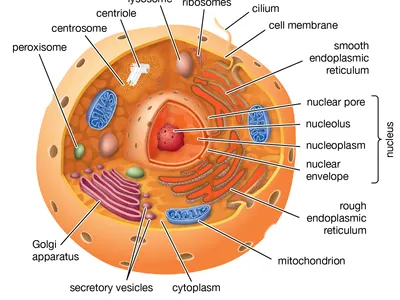
Cytoskeleton
A network of protein/fibers that hold the cell together and provides supports to the organelles inside. It helps the cell keep its shape and majorly aids in movement. Found in both prokaryotes and eukaryotes.
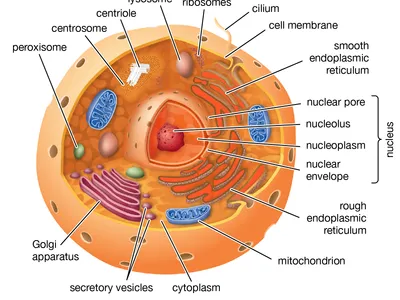
Ribosomes
Non-membrane bounded organelles responsible for protein synthesis, meaning they make proteins. They can either be floating free around in the cell or attached to other organelles. Found in both prokaryotes and eukaryotes.
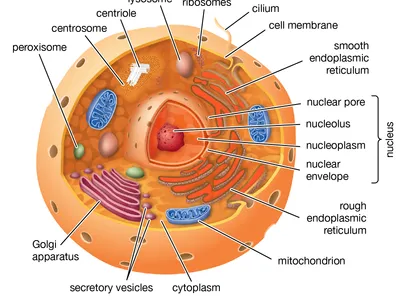
Nucleus
Only in eukaryotes, it holds the genetic material (DNA and RNA). Controls the cell and its activities.

Nucleolus
Found inside the nucleus and produces ribosomes.
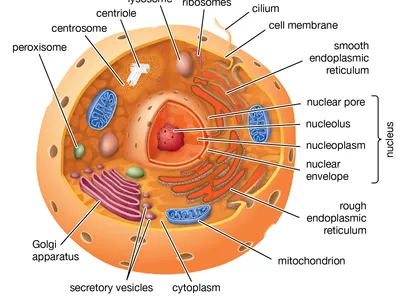
Endoplasmic Reticulum (ER)
Attached to the nuclear membrane as a folded maze of passageways. It does a lot of the processing of molecules (e.g. protein folding) for the cell and highly aids in transport. Only found in eukaryotic cells.
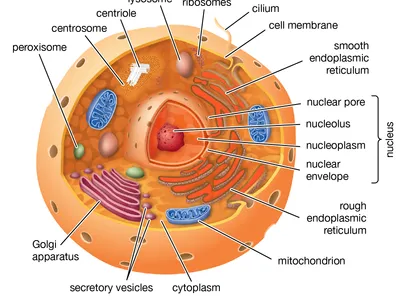
Rough Endoplasmic Reticulum (RER)
The region of the ER that has ribosomes attached to it like small, rounded spikes. Aids/involved in protein processing and transport. Sends of molecules from the ER in vesicles. Only found in eukaryotic cells.

Smooth Endoplasmic Reticulum (SER)
The region of the ER that has little to no ribosomes attached to it, making it smooth. It takes care of additional roles. Detoxification and creation of certain lipids are among its "jobs". Only found in eukaryotic cells.
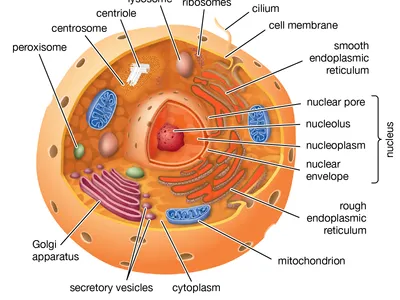
Golgi apparatus
A system of membranes and vesicles in eukaryotic cells that modifies, sorts and packages proteins to be secreted (exported) from the cell. It has enzymes that modifies the molecules it receives (often from the ER).
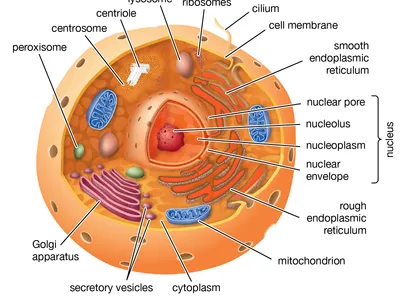
Mitochondria
The powerhouse of the cell. It makes ATP through a process called cellular respiration. It runs on glucose and partly oxygen. They have a double membrane, the inner one is folded and runs on its own genome. They divide independently through fission. Only found in eukaryotic cells.
What are eukaryotes divided in? (It's not a one size fits all)
Animal cells and plant cells
What defines plant cells?
They have chloroplast in addition to mitochondria. Large vacuoles called center vacuoles. They have a cell wall in addition to the cell membrane.
What defines animal cells?
No chloroplast or cell wall (only membrane). They have many smaller vacuoles instead of one big.
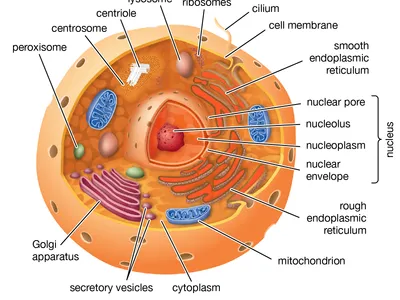
Chloroplast
A green organelle in plant cells that makes glucose by using light energy in photosynthesis. Only found in plant cells.
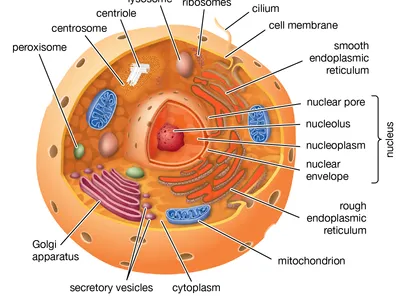
Vacolues
Exist in eukaryotes, both animal and plant cells. It has multiple functions, especially acting as storage for materials
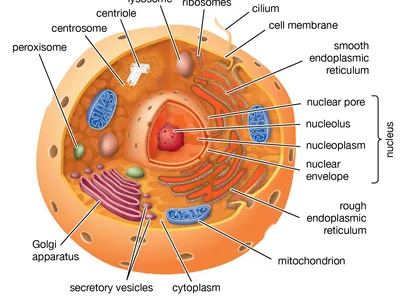
Cell wall
A rigid layer that surrounds the cell membrane and provides additional support, protection and shape maintenance to the cell. Found in plant cells and certain bacteria.
How proteins leave the cell? (Generally)
Firstly they are made by a ribosome with instructions from the DNA in the nucleus. The ribosome attached to the ER would send it off "the ER highway" where the proteins would be put in a vesicle. The vesicle with the ribosomes would travel to the Golgi apparatus where they could be tagged for secretion, put in yet another vesicle and sent to the membrane that they leave out of.
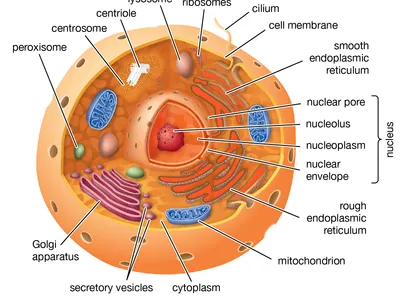
Lysosomes
Cell organelle filled with enzymes needed to break down certain materials in the cell. Mainly found in eukaryotic cells.
Centrioles
Cylindrical structures found in pairs that play a key role in cell division by organizing the microtubules to form the spindle fibers. Found in eukaryotic cells, particularly animal cells.
What two organelles are not found in animal cells?
Chloroplasts and cell walls
Who named the cell?
Robert Hooke, in 1665, named the cell after observing cork under a microscope.
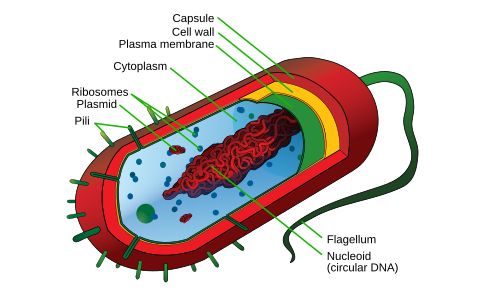
What is the flagella?
A long, whip-like structure that enables cell movement and locomotion in various organisms.
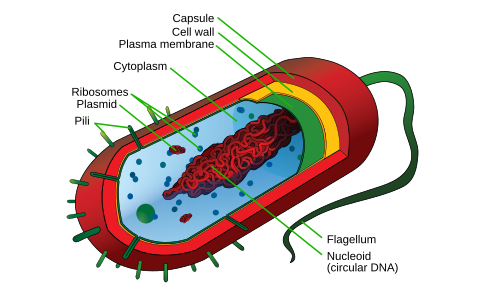
What is the cell wall?
A rigid outer layer found in plant cells, fungi, and some bacteria that provides structure and protection.
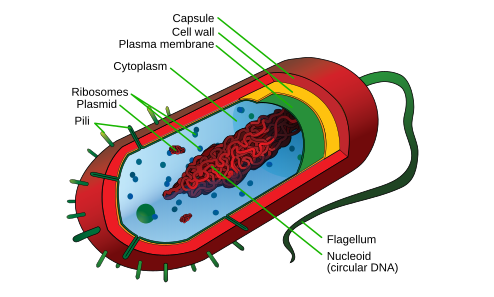
What is the cell membrane?
A semipermeable barrier that surrounds the cell, controlling the movement of substances in and out.
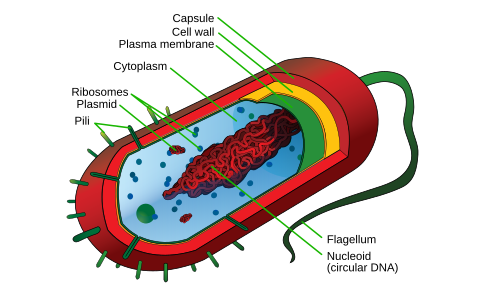
What are ribosomes?
Cellular structures responsible for protein synthesis, found in all living cells.
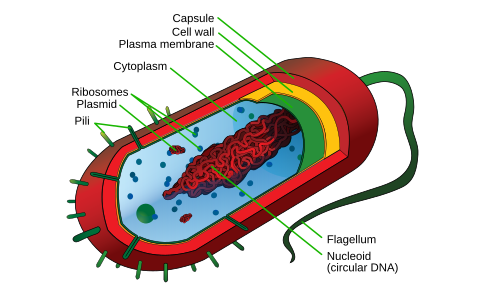
DNA
a single, circular, double-stranded molecule found in a central region of the cell called the nucleoid
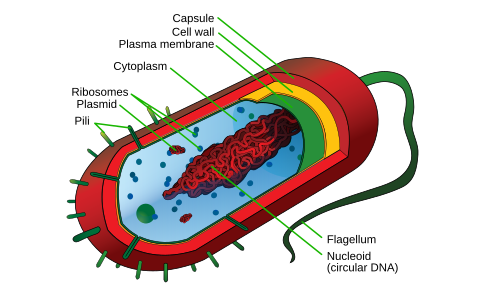
Pili/Cilia
Hair-like structures on the surface of some bacteria and eukaryotic cells, aiding in movement and attachment.
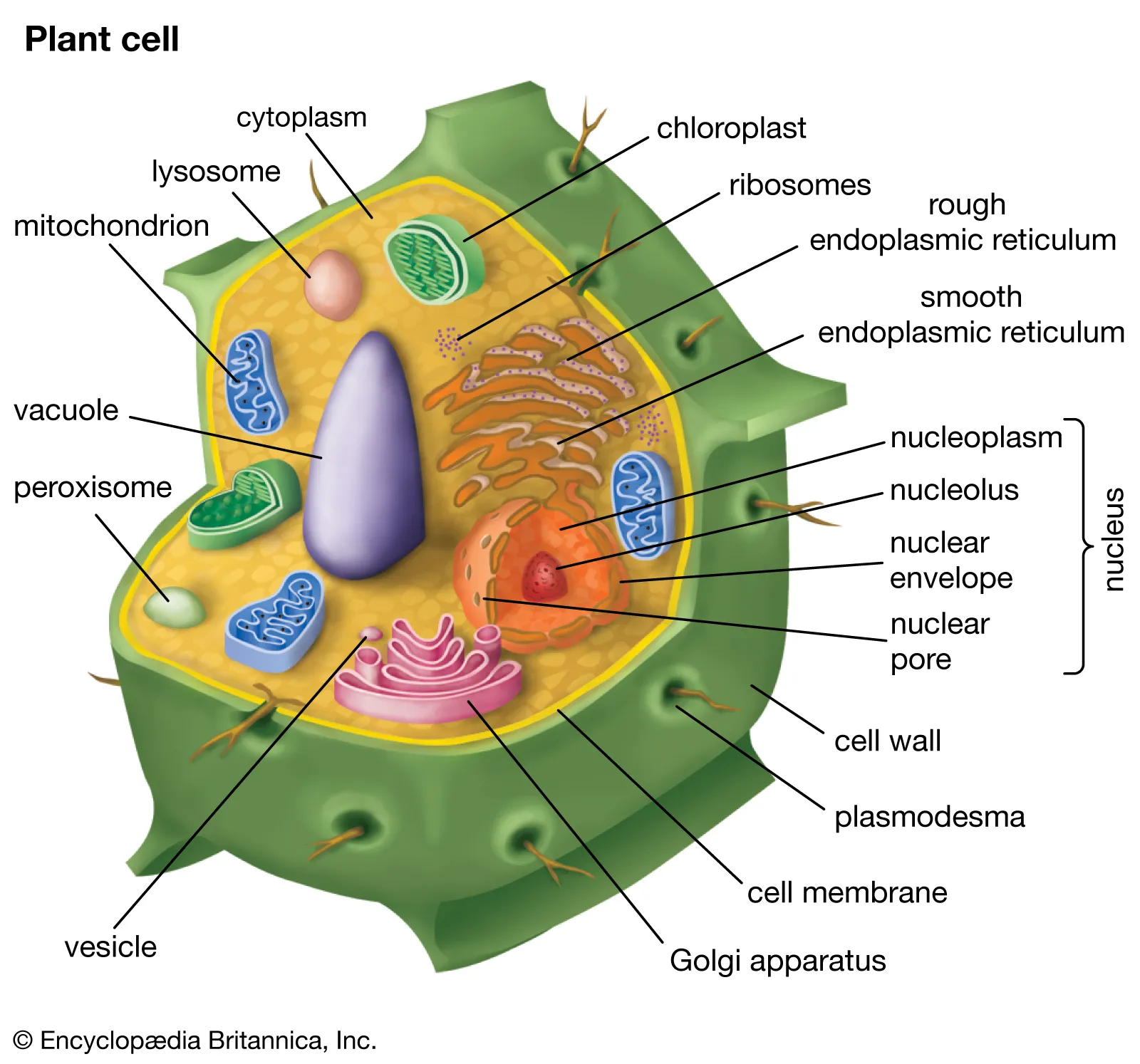
What kind of cell is this?
Eukaryotic Plant cell characterized by a cell wall, chloroplasts, and large central vacuoles.
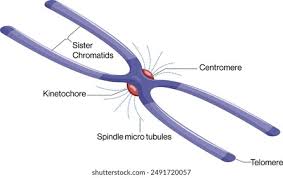
Where is the centromere located in a eukaryotic chromosome?
located in the constricted region of a eukaryotic chromosome, serving as the attachment point for spindle fibers during cell division.
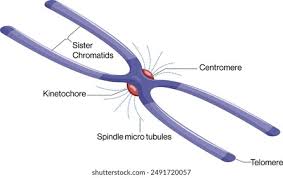
Where are the chromatids located in a eukaryotic chromosome?
located on either side of the centromere in a eukaryotic chromosome, forming two identical halves that are created during DNA replication.
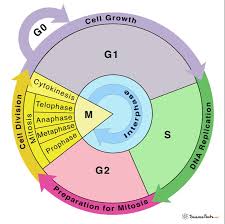
Define the G1 phase of the cell cycle
the first stage of the cell cycle, following cell division. During this phase, the cell grows, synthesizes proteins, and produces organelles in preparation for DNA replication.
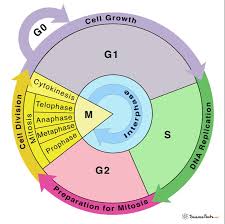
Define the S phase of the cell cycle
chromosomes to prepare for cell division.
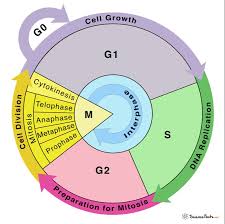
Define the G2 phase of the cell cycle
the third growth phase of the cell cycle, following the S phase. The cell continues to grow, produces proteins necessary for mitosis, and ensures that DNA has been accurately replicated before entering mitosis.
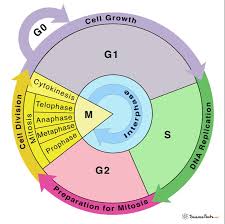
Define Mitosis
the process of cell division that results in two genetically identical daughter cells, involving the separation of duplicated chromosomes and the division of the cytoplasm.
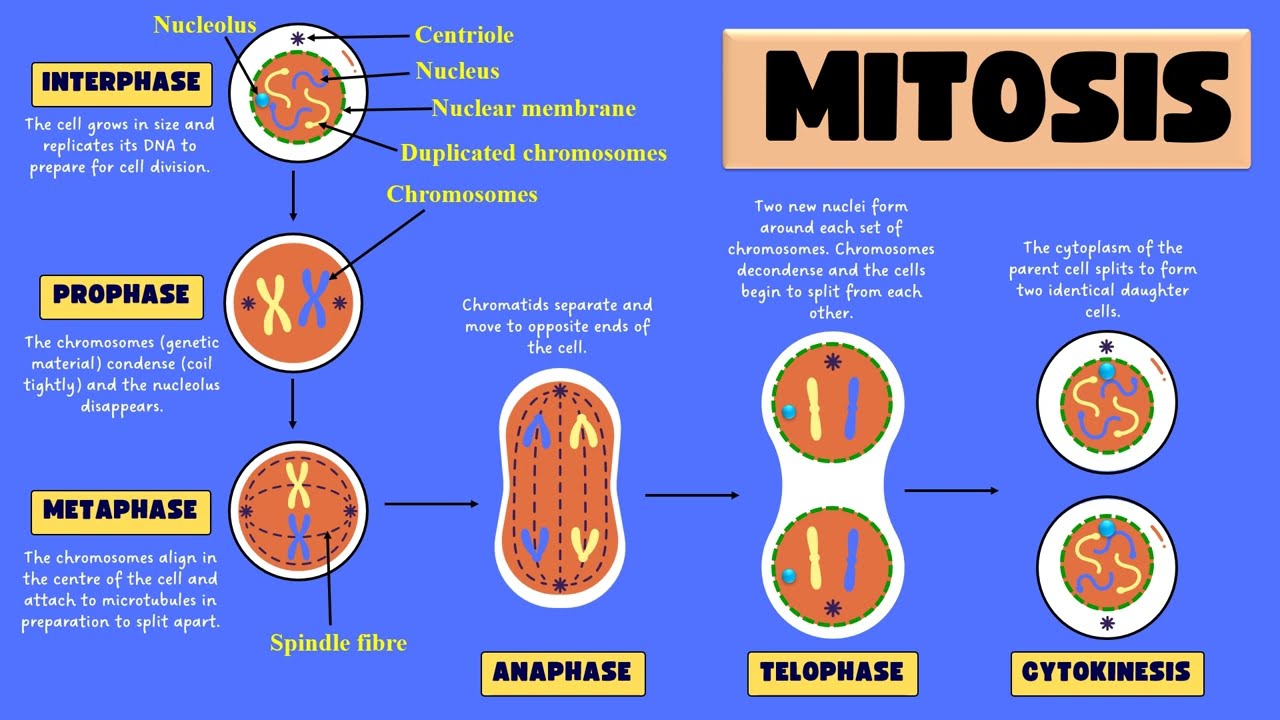
Define Prophase
the first stage of mitosis, during which chromosomes condense and become visible, the nuclear envelope begins to break down, and the spindle apparatus starts to form.
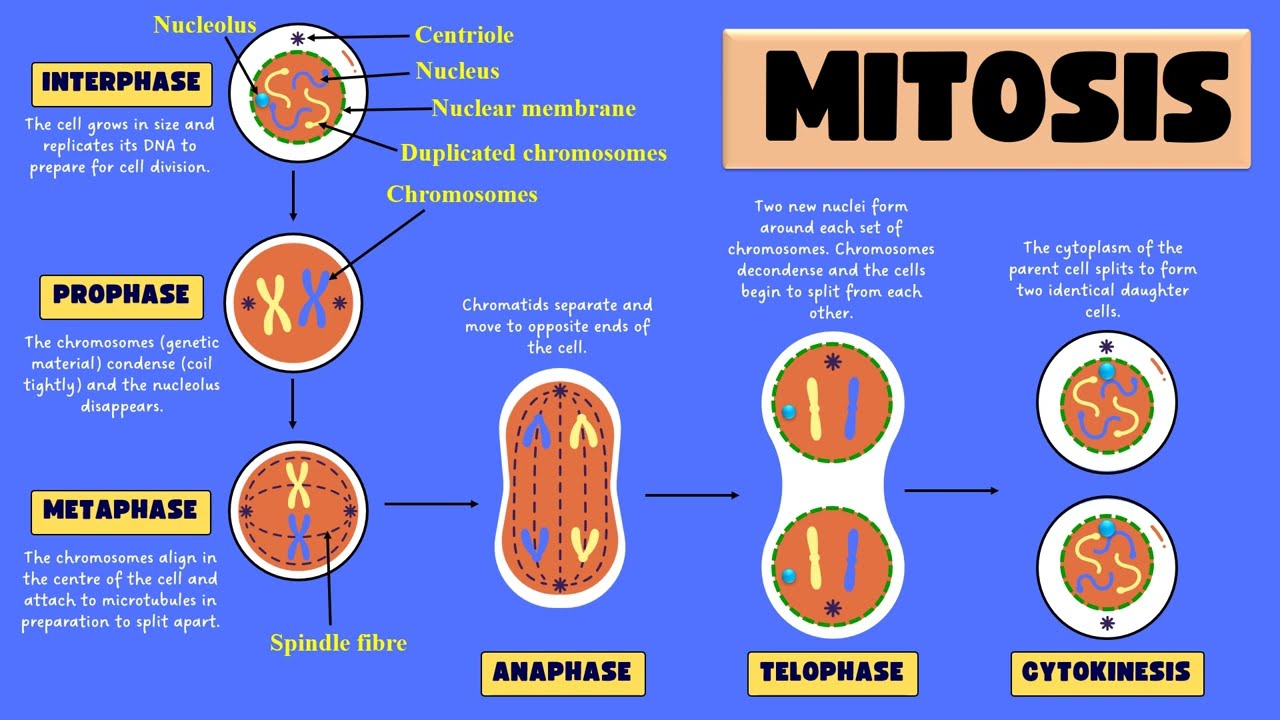
Define metaphase
the second stage of mitosis where chromosomes align at the cell's equatorial plane, ensuring that each sister chromatid is attached to spindle fibers from opposite poles before being separated.
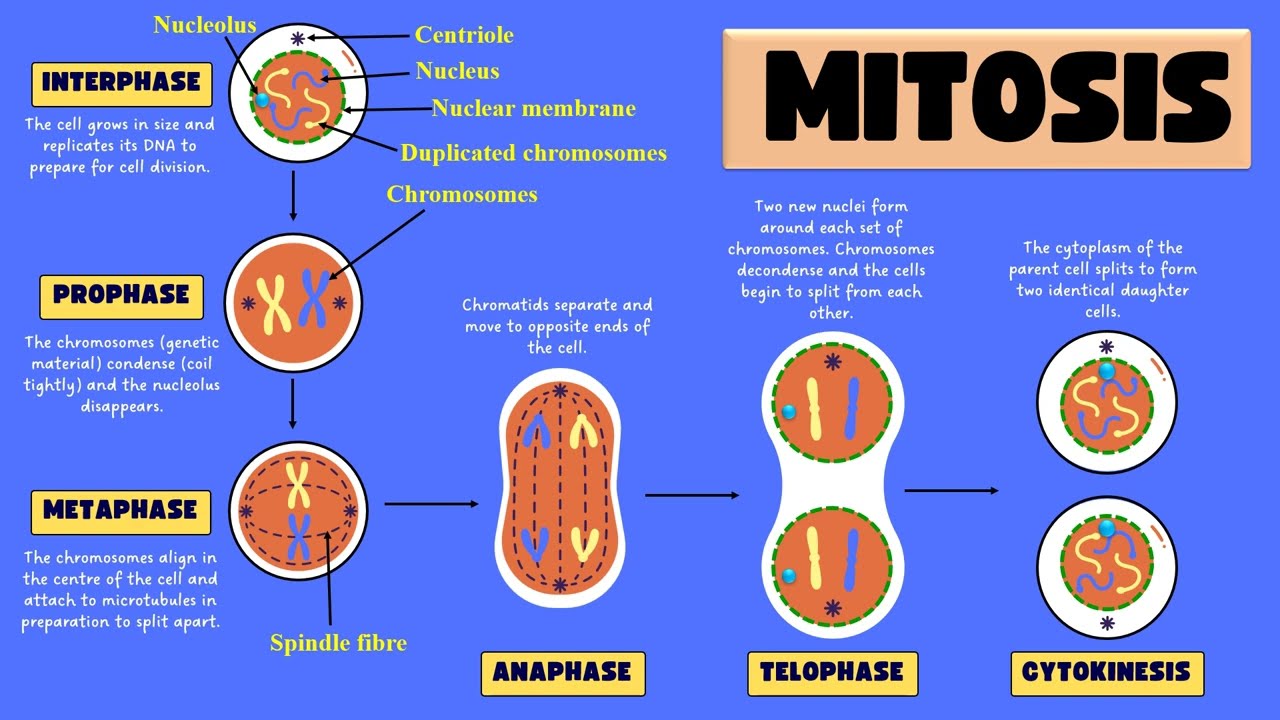
Define Anaphase
the third stage of mitosis, characterized by the separation of sister chromatids as they are pulled toward opposite poles of the cell by the spindle fibers, ensuring each new daughter cell receives an identical set of chromosomes.
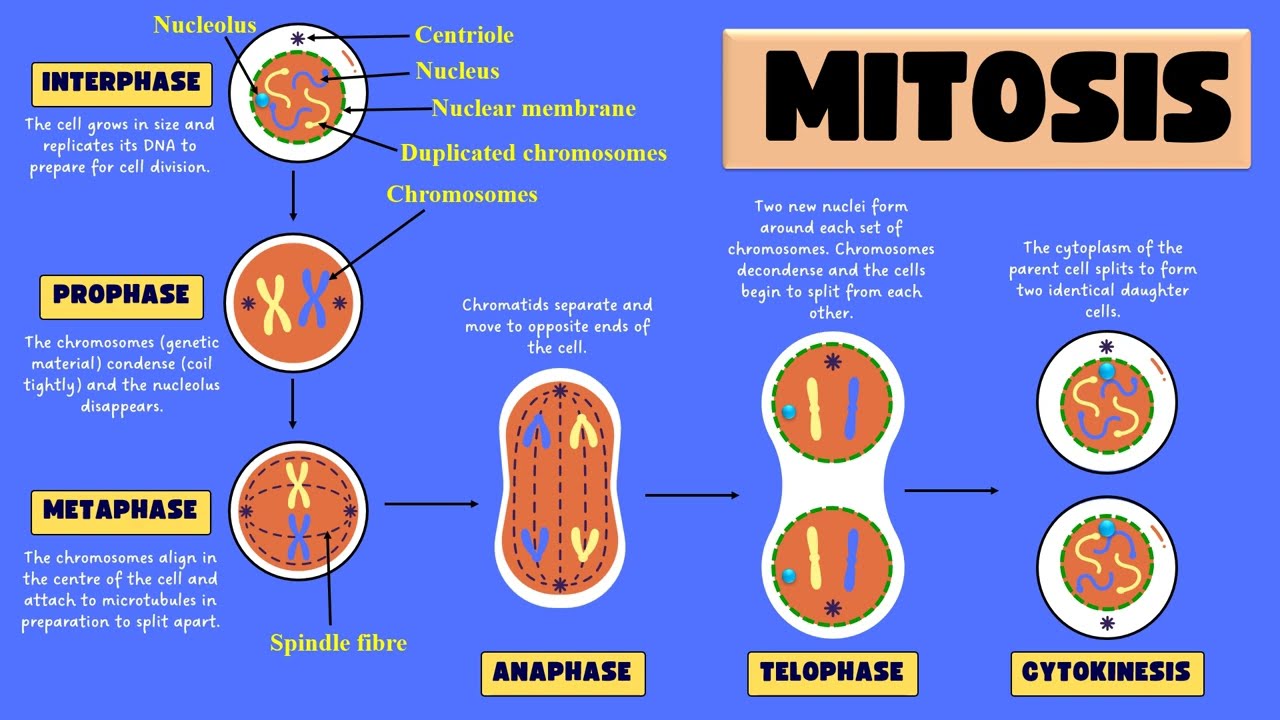
Define Telophase
the final stage of mitosis, during which the separated sister chromatids reach the opposite poles of the cell, the nuclear envelope reforms around each set of chromosomes, and the chromosomes begin to de-condense, preparing for cell division.
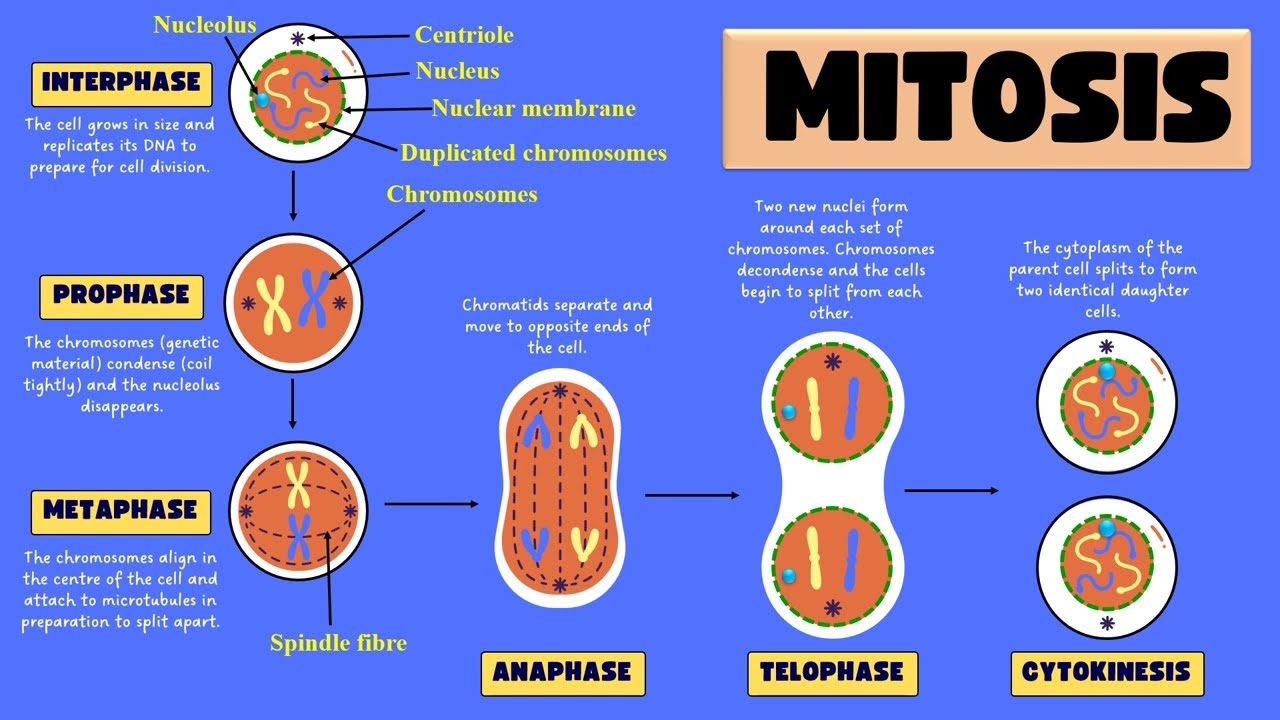
Define Cytokinesis
the final stage of cell division, following mitosis, where the cytoplasm divides, resulting in the formation of two distinct daughter cells, each with its own nucleus and organelles.
What are the three circumstances when mitosis or cell division will occur?
Growth of Organism, Repair by replacing damaged/ dead cells, and Binary Fission - asexual reproduction for single cell organisms.
What is an example of a possible cause of cancer?
Rapid growth of cells
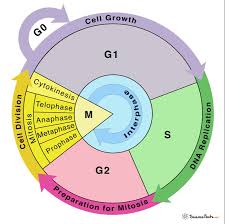
The majority of the cell’s life cycle is spent in this phase?
Interphase
Cancer is ulitimately caused by a defect in the ___ that stops cell growth.
genes
The end result of mitosis is
two genetically identical daughter cells